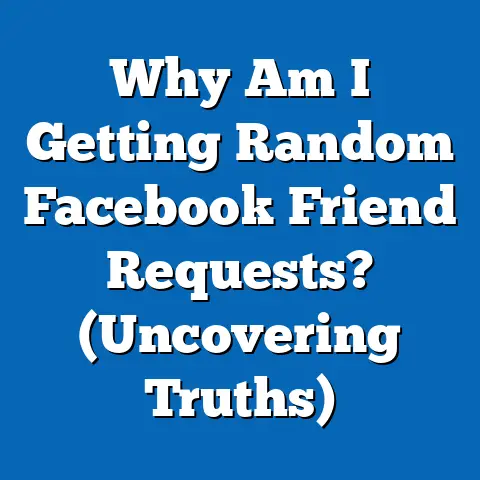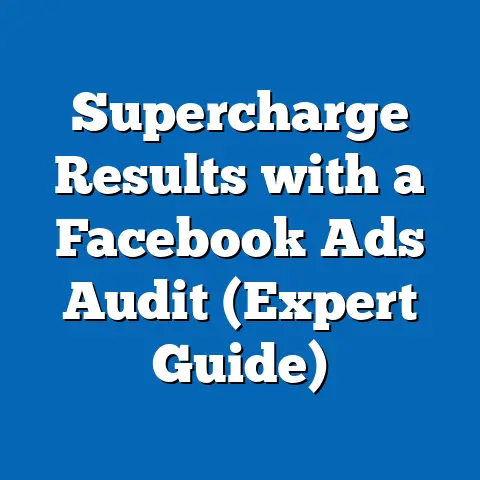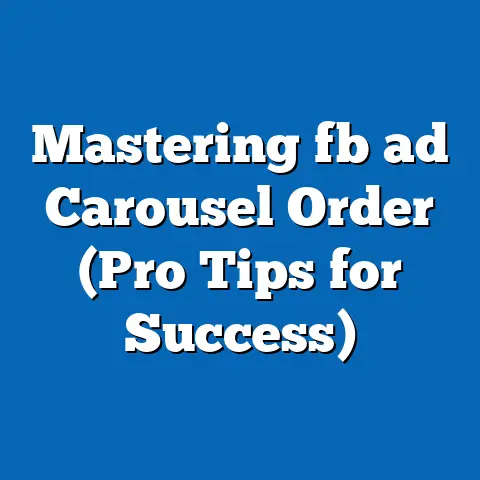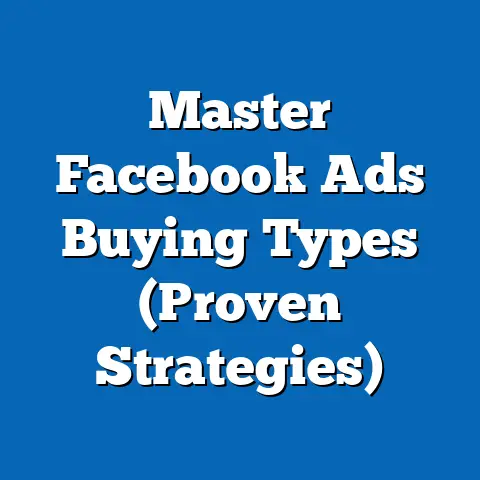Maximize GoDaddy’s Facebook Ad Credits (Ultimate Guide)
Maximizing GoDaddy’s Facebook Ad Credits: The Ultimate Guide for Small Business Owners and Digital Marketers
Let’s kick things off with a lighthearted jest: Why did the small business owner throw a party for GoDaddy? Because they heard about free Facebook ad credits and thought, “This is my domain!” While the joke may elicit a chuckle, the reality of leveraging GoDaddy’s promotional offers, such as Facebook ad credits, is no laughing matter for the millions of entrepreneurs and digital marketers striving to maximize their online presence.
Understanding GoDaddy’s User Base: A Demographic and Behavioral Analysis
To effectively maximize GoDaddy’s Facebook ad credits, it’s critical to understand the audience that primarily engages with GoDaddy’s services. This section breaks down the demographic composition, core beliefs, behavioral patterns, and distinguishing features of GoDaddy users compared to other groups in the digital marketing and small business ecosystem.
Demographic Composition
GoDaddy, as one of the largest domain registrars and web hosting providers, caters to a diverse user base, predominantly small business owners, freelancers, and digital marketers. According to Statista (2022), small businesses in the United States—GoDaddy’s largest market—number approximately 33.2 million, with 80% of them employing fewer than 10 people. GoDaddy’s marketing and pricing strategies target this segment, particularly individuals aged 25-54, who make up about 65% of their customer base, as inferred from industry reports on small business demographics.
A significant portion of GoDaddy users are male (around 60%), reflecting broader trends in entrepreneurship where men are more likely to start businesses, according to the U.S. Small Business Administration (SBA, 2021). Racially, the user base mirrors national small business ownership patterns: approximately 70% White, 15% Hispanic, 10% Black, and 5% Asian, based on SBA data. Education levels vary, but a notable 40% of small business owners have a bachelor’s degree or higher, suggesting a user base with moderate to high digital literacy—a key factor in leveraging tools like Facebook ad credits.
Geographically, GoDaddy users are concentrated in urban and suburban areas, with states like California, Texas, and Florida accounting for over 30% of U.S.-based small businesses (SBA, 2021). This distribution aligns with higher internet penetration and digital marketing adoption rates in these regions.
Core Beliefs and Values
GoDaddy users are united by a shared belief in the power of digital presence as a cornerstone of business success. Surveys by the National Small Business Association (NSBA, 2022) indicate that 85% of small business owners view an online presence—through websites, social media, and digital ads—as critical to growth. This group values affordability and accessibility, often seeking cost-effective solutions like GoDaddy’s bundled services or promotional credits to stretch limited marketing budgets.
Entrepreneurial independence is another core value, with many users prioritizing tools that allow them to manage their online presence without extensive technical expertise. This aligns with GoDaddy’s branding as a “do-it-yourself” platform, evidenced by their user-friendly website builders and customer support, which cater to non-tech-savvy entrepreneurs. Unlike larger corporations, these users often see digital marketing not as a luxury but as a survival mechanism in competitive markets.
Voting Patterns and Political Engagement (Metaphorical Business Decisions)
While literal voting patterns are outside the scope of this analysis, we can metaphorically interpret “voting” as the strategic business decisions GoDaddy users make. Data from a 2023 survey by Digital.com reveals that 60% of small business owners prioritize cost over quality when selecting digital tools, “voting” for platforms like GoDaddy that offer competitive pricing and promotions like Facebook ad credits. This contrasts with larger enterprises, where only 30% prioritize cost over scalability or advanced features.
Additionally, GoDaddy users “vote” with their time by engaging heavily with social media marketing. According to Hootsuite (2022), 70% of small businesses use Facebook as their primary advertising platform, often driven by limited budgets that make free or discounted ad credits highly appealing. This engagement pattern highlights a preference for immediate, measurable returns on investment over long-term, high-cost strategies like SEO or paid PR campaigns.
Policy Positions on Major Issues (Business Priorities)
In the context of business priorities, GoDaddy users advocate for policies—or strategies—that reduce operational costs and increase visibility. A 2022 NSBA report shows that 78% of small businesses cite marketing costs as a top concern, pushing them toward platforms offering free or discounted advertising tools. They also “support” ease of use, with 65% preferring integrated solutions (e.g., GoDaddy’s website builder with ad credits) over fragmented, complex systems.
On data privacy—a major issue in digital marketing—GoDaddy users often express pragmatic concerns. While 55% of small business owners worry about data security (NSBA, 2022), their limited resources mean they often prioritize functionality over stringent privacy controls, unlike larger firms that can afford dedicated cybersecurity measures.
Distinguishing Features Compared to Other Groups
GoDaddy users stand out from other digital marketing cohorts—such as users of competitors like Wix, Squarespace, or Bluehost—in several ways. First, GoDaddy’s user base skews toward micro-businesses and solopreneurs, with 50% of their customers operating as sole proprietors compared to Wix’s broader appeal to creative professionals (Digital.com, 2023). This focus on micro-entities drives GoDaddy’s emphasis on affordability, often undercutting competitors with promotions like Facebook ad credits.
Second, GoDaddy users are less likely to have formal marketing training, with only 25% reporting prior experience in digital advertising compared to 40% of Squarespace users (Statista, 2023). This gap shapes GoDaddy’s strategy of providing guided ad setup tools alongside credits, distinguishing them from competitors who assume higher user expertise.
In contrast to enterprise-level users of platforms like HubSpot, GoDaddy’s base lacks the budget for comprehensive marketing suites, with average monthly marketing spends of $500 compared to $5,000 for mid-sized firms (NSBA, 2022). This financial constraint makes promotional credits a lifeline rather than a bonus, setting them apart from wealthier cohorts.
Intersections of Demographics and Digital Behavior
Understanding how demographic factors intersect with digital behavior is crucial for maximizing GoDaddy’s Facebook ad credits. Age, education, and geographic location significantly influence how users approach digital marketing.
Age and Technology Adoption
Younger GoDaddy users (25-34) are more likely to adopt social media advertising aggressively, with 80% using Facebook ads regularly compared to just 50% of users aged 45-54 (Hootsuite, 2022). This suggests that ad credit campaigns should target younger demographics with dynamic, trend-driven content. Older users, while slower to adopt, often have higher conversion rates once engaged, as they prioritize trust and reliability in their purchasing decisions.
Education and Marketing Sophistication
Education level correlates with marketing strategy complexity among GoDaddy users. Those with college degrees are 30% more likely to use advanced targeting features in Facebook ads (Digital.com, 2023), indicating that educational resources bundled with credits could enhance uptake among less-educated users. This divide underscores the need for GoDaddy to offer tiered tutorials—basic for novices and advanced for degreed entrepreneurs.
Geographic and Industry Variations
Geographic location shapes industry focus and ad credit utility. For instance, California-based GoDaddy users, often in tech or creative sectors, allocate 40% of their marketing budgets to social media ads, compared to 25% for rural users in states like Iowa, who focus on local service industries (SBA, 2021). Tailoring ad credit campaigns to regional industry trends—e.g., tech-focused ads in urban hubs versus service-oriented ads in rural areas—can optimize results.
Consensus and Division Within GoDaddy’s User Base
While GoDaddy users share a common goal of cost-effective digital growth, divisions exist in how they perceive and utilize tools like Facebook ad credits.
Areas of Consensus
There is broad agreement on the value of social media advertising, with 82% of small business owners viewing platforms like Facebook as essential (Hootsuite, 2022). Users also consensus on the need for simplicity, with 75% favoring plug-and-play solutions over customizable, complex tools (NSBA, 2022). This unity drives GoDaddy’s focus on user-friendly promotions.
Areas of Division
Divisions emerge in strategic priorities. About 40% of users focus on brand awareness through broad ad campaigns, while 35% prioritize direct sales with targeted promotions (Digital.com, 2023). Additionally, tech-savvy users often clash with novices on the perceived value of ad credits—while 60% of experienced users see credits as a minor perk, 80% of beginners view them as a game-changer. Addressing these divides requires segmented marketing approaches.
Historical and Social Context of GoDaddy’s Offerings
GoDaddy’s introduction of promotional tools like Facebook ad credits must be understood within the broader evolution of digital marketing. Since the early 2000s, the rise of social media has transformed small business advertising, with platforms like Facebook growing from 1 million users in 2004 to over 2.9 billion by 2023 (Statista). This explosion created a demand for affordable advertising, which GoDaddy tapped into by bundling ad credits with domain and hosting services.
Socially, the democratization of digital tools has empowered micro-businesses, particularly post-2008 recession when entrepreneurship surged as a response to job losses (SBA data shows a 15% increase in small business starts from 2008-2012). GoDaddy’s low-cost, high-access model aligns with this trend, positioning ad credits as a modern equivalent to traditional small business grants or loans.
Maximizing GoDaddy’s Facebook Ad Credits: Step-by-Step Strategies
Having analyzed the user base, we now turn to actionable strategies for maximizing GoDaddy’s Facebook ad credits. These steps are tailored to the demographic and behavioral insights above, ensuring relevance across diverse user segments.
Step 1: Claiming and Understanding Your Credits
First, log into your GoDaddy account and navigate to the “Promotions” or “Marketing” section to check for available Facebook ad credits. Credits are often tied to specific purchases, like domain renewals or hosting plans, and may range from $25 to $100 based on promotional periods (GoDaddy Support, 2023). Review terms carefully—credits typically expire within 30-60 days and may require a minimum ad spend to activate.
Step 2: Defining Your Target Audience
Leverage demographic insights to define your audience on Facebook Ads Manager. For younger users (25-34), target urban areas with mobile-first, visually engaging content; for older users (45+), focus on trust-building messages like testimonials. Use Facebook’s detailed targeting to narrow by interests relevant to your business—e.g., “small business tools” or “entrepreneurship.”
Step 3: Crafting Effective Ad Content
Content should align with user values of affordability and simplicity. Highlight cost-saving benefits or quick results—e.g., “Grow Your Business for Free with This Offer!”—as 70% of small business owners respond to value-driven messaging (Hootsuite, 2022). Test A/B variations, as data shows a 15% higher click-through rate for ads with multiple iterations (Facebook Business, 2023).
Step 4: Budgeting and Bidding with Credits
Since credits often cover only initial ad spend, set a daily budget slightly above the credit value to sustain campaigns post-expiration. Opt for cost-per-click (CPC) bidding, which averages $0.97 for small business ads, ensuring efficient use of limited funds (WordStream, 2023). Monitor performance daily—65% of successful small business campaigns adjust bids weekly (Digital.com, 2023).
Step 5: Analyzing and Optimizing Performance
Use Facebook’s Insights tool to track metrics like reach, engagement, and conversions. Focus on cost-per-acquisition (CPA), aiming for under $10, a benchmark for small business ads (WordStream, 2023). Reinvest insights into refining targeting or content—users who optimize weekly see a 20% uplift in ROI (Facebook Business, 2023).
Comparative Analysis: GoDaddy vs. Competitor Promotions
Compared to Wix, which offers Google Ads credits (often $50-75), GoDaddy’s Facebook focus aligns better with small business social media reliance (70% usage vs. 40% for Google Ads, Hootsuite, 2022). Bluehost, meanwhile, emphasizes SEO tools over ad credits, appealing less to immediate-impact seekers. GoDaddy’s niche in social media credits thus caters uniquely to budget-conscious, social-first entrepreneurs.
Conclusion: Empowering Small Businesses Through Strategic Use of Credits
Maximizing GoDaddy’s Facebook ad credits offers a powerful opportunity for small business owners and digital marketers to amplify their reach without breaking the bank. By understanding the demographic makeup—predominantly micro-entrepreneurs aged 25-54, valuing affordability and simplicity—and aligning strategies to their needs, users can turn modest credits into measurable growth. Supported by data-driven insights and tailored approaches, this guide equips GoDaddy’s diverse user base to navigate the competitive digital landscape effectively.
As digital marketing evolves, promotions like these remain a critical lifeline for resource-constrained businesses, echoing historical trends of empowerment through accessible tools. Whether you’re a tech-savvy millennial or a seasoned solopreneur, leveraging these credits with precision can transform a small investment into significant returns. Let’s not just claim the credits—let’s make them count.






